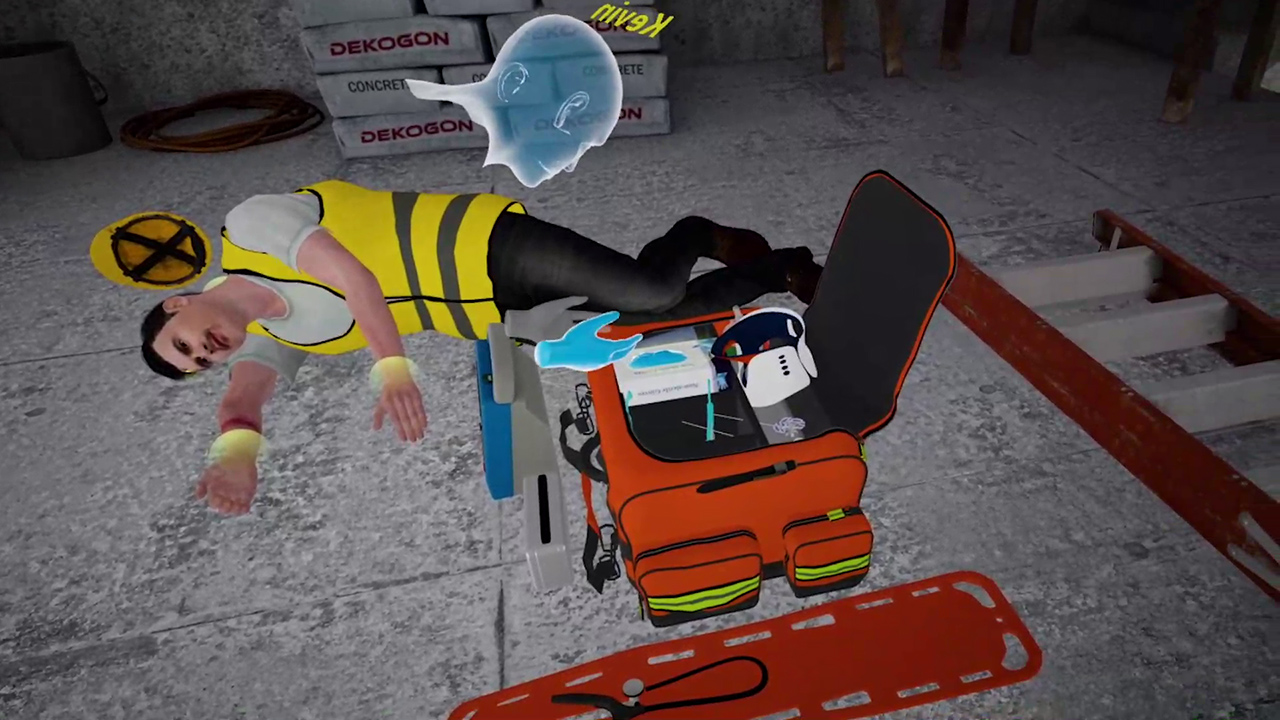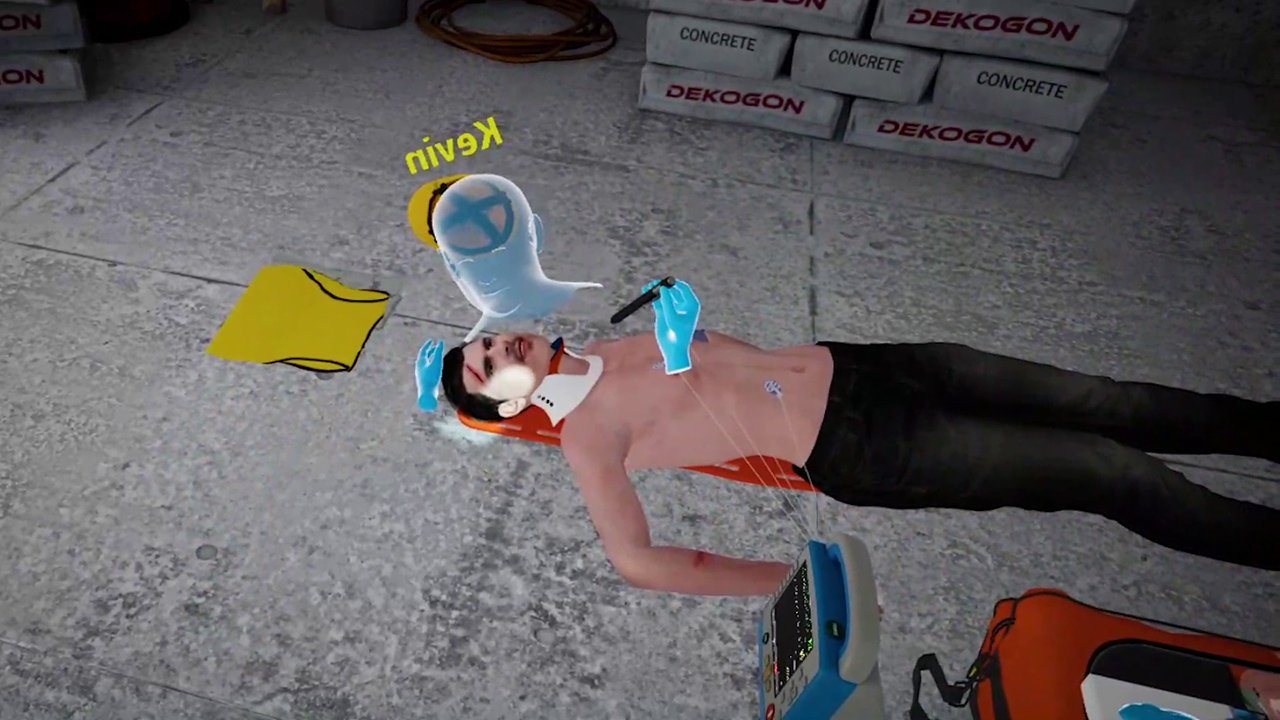Patient Assessment – Trauma
Successful completion of this scenario will help learners refine their patient assessment trauma skills and prepare for EMS association courses, and state and national EMS provider exams.
Jacob Smith is a 38-year-old male construction worker who fell off a ladder, approximately 10 feet. He has suffered several injuries to his head and arm that need to be assessed and treated. Jacob is asthmatic and occasionally suffers from a back pain.
This multiplayer VR patient assessment simulation focuses on prehospital assessment and management of a trauma patient. It is designed to help EMS professionals practice trauma assessment and management in a safe and controlled virtual setup with a virtual patient.
- Demonstrate proficiency in conducting a primary and secondary trauma assessment
- Apply appropriate interventions such as hemorrhage control, splinting, and airway management
- Identify and classify different types of traumatic injuries, including those affecting the head, chest, abdomen, and extremities

- (U.S.), N. A. of E. M. T. (2023). PHTLS: Prehospital trauma life support. Jones & Bartlett.
- Pollak, A. N., Edgerly, D., & McKenna, K. (2021). Emergency care and transportation of the sick and injured. Jones & Bartlett Learning.
 AI Patient Assessment
AI Patient Assessment Natural Language Processing
Natural Language Processing Multi-playerSessions
Multi-playerSessions Physics-based Interaction
Physics-based Interaction
Core Skills Training

Patient Assessment - Trauma
As part of this Patient Assessment - Trauma open scenario, the learner will begin by assessing the environment and conducting a detailed assessment of the patient. This will include determining patient’s responsiveness, assessing the airway, and verifying extent of injuries. The learner will further check the patient’s pupils, upper and lower extremities, and the patient’s pulse. The patient will be ready for transport to the ambulance after the learner has bandaged the injuries. All affordances are provided within the environment to provide a realistic and immersive learning experience.
Debriefing
End-of-task debriefing to assess one’s performance, evaluate actions, and get the most out of the training. Examples of topics being touched upon in the debriefing include the following:
- Thorough patient assessment
- Completion of necessary steps
- Correct medication administration to patient
- Sequential completion of task
- Execution of time-sensitive tasks






